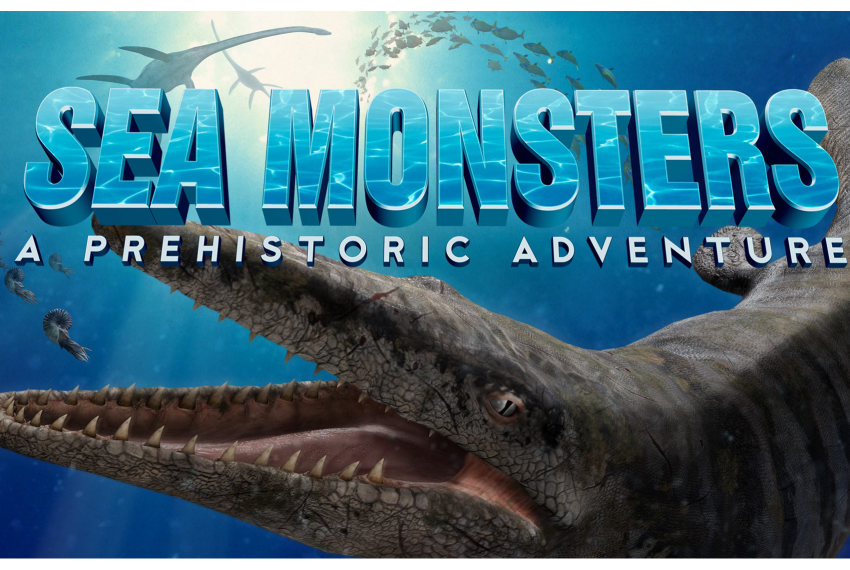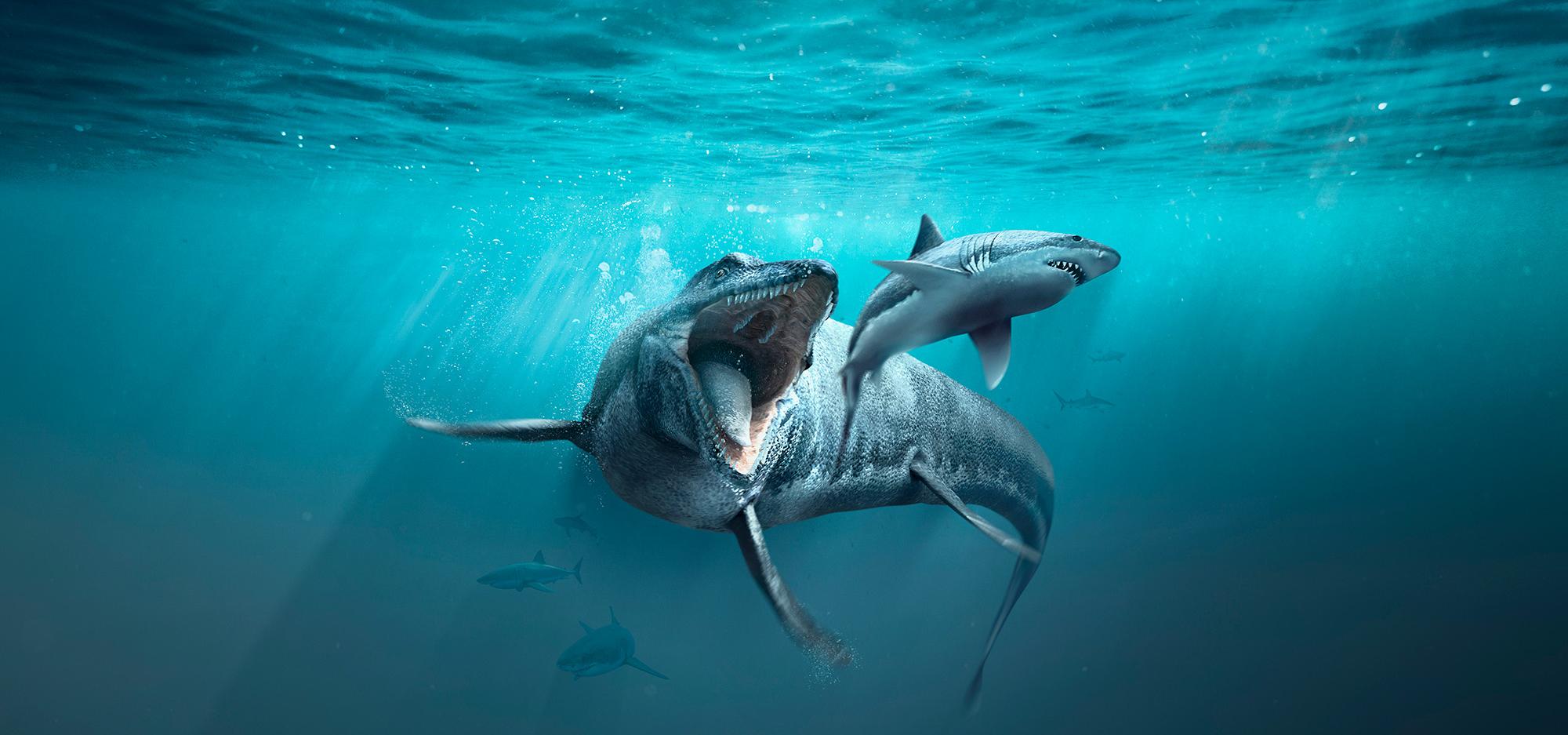Sea Monsters: Prehistoric Ocean Predators
Location
Victoria Quay Road, Fremantle / Walyalup
Dates
Tickets
Standard | $15
Concession | $12.50
Junior (5 – 15) | $12.50
Junior (0 – 4) | Free
Family | $50
Education
Information for education groups.
Session times
Pre book your tickets early to secure your preferred session time
Seriously scary - not for the faint-hearted!
Millions of years ago, while dinosaurs ruled the land, giant reptiles more than 20 metres long hunted the depths of the sea – and they’re coming back to life at WA Maritime Museum.
Sea Monsters: Prehistoric Ocean Predators brings together real fossils from millions of years ago, life-sized casts from actual specimens, including a 13-metre long Elasmosaurus and nine-metre Prognathodon, multimedia, and hands-on interactives to raise from the dead these ancient monsters of the deep.
The exhibition features over 70 exhibits and includes a huge 1.4-metre Kronosaurus jaw. There is also an incredible ichthyosaur specimen giving birth and a five-metre-long fish that died after swallowing another fish whole.

Sea Monsters: A Prehistoric Adventure
Rated G, 40 mins, Screening daily every hour | 10am – 4pm
Film screening is free for exhibition ticket holders.
A film for the whole family. Journey 80 million years back in time to an age when mighty dinosaurs dominated the land – and an equally astonishing assortment of ferocious creatures swam, hunted and fought for survival beneath the vast, mysterious prehistoric seas.
About the exhibition
- Marine reptiles originally evolved on land and then went back to the sea.
- The biggest marine reptile was the 24-metre Shonisaurus, a type of ichthyosaur.
- Australia’s top plesiosaur predator, the Kronosaurus, had a bite force of 3 tonnes – more than a saltwater crocodile.
- The mosasaur Prognathodon’s head was so heavy; if it had lived on land, it couldn’t have lifted it.
- The first sea monster fossils were discovered about 50 years before we found any dinosaurs – we’ve known about them for around 250 years.
- Sea monsters ruled the oceans for over 180 million years (modern humans have only been around for about 300,000 years).
- Some ichthyosaurs could swim at speeds of 40 kilometres per hour.
- Some Australian sea monster fossils have become stunning and valuable opals.
- We can learn about what sea monsters ate by looking at their fossilised poo, called coprolites.
- The plesiosaur Albertonectes had 72 neck bones – more than any other animal. We have only seven.
Dolichorhynchops
- Lived 80-90 million years ago
- Name means “long snout”
- Approximately the size of a dolphin
- Fast swimmer that fed on fish and squid
- Had no external ears, making it possibly deaf to airborne sounds
Tylosaurus
- Lived 73-80 million years ago
- One of the largest mosasaurs
- Among the largest and most ferocious predators of any era
- Grew to between 35 and 45 feet long
- Eyes were as big as grapefruit
- Had four rows of sharp, cone-shaped teeth to seize and crush prey, and could swallow prey whole
Styxosaurus
- Lived 80-85 million years ago
- A member of the plesiosaurs
- Its neck was 20 feet long — up to half its body length
- Each of its flippers was the size of an adult human
- Swallowed hundreds of small rocks to help grind up meals
Xiphactinus
- Lived 70-95 million years ago
- Largest bony fish of Late Cretaceous, reaching 20 feet long
- Nicknamed the “bulldog” fish because of upwards thrust of jaw
- Able to swallow prey up to half its length
- Often fed on a 6-foot fish called a Gillicus
Cretoxyrhina
- Lived 82-95 million years ago
- Largest of the Late Cretaceous sharks, reaching 22-24 feet long
- Cretoxyrhinateeth have been found in Tylosaurusremains, clues that these two predators may have encountered each other
- Sharks outlasted extinction of all marine reptiles, except sea turtles
- Was similar in size and role to the modern great white shark
Hesperonis
- Lived 65-89 million years ago
- Large flightless bird that swam in the ocean
- Swam and fed much like modern penguins
- Grew as big as 5-6 feet long from beak to foot
- Had teeth in its beak to help with holding prey
This event is wheelchair accessible.
50% visual content rating – Sea Monsters: Prehistoric Ocean Predators has both sound and visual components.
50% aural content rating – Sea Monsters: Prehistoric Ocean Predators has sound components.
If you have any questions about access, please get in touch with us via reception@museum.wa.gov.au or on 1300 134 081.
An Australian National Maritime Museum touring exhibition in partnership with Queensland Museum Network

In partnership with

